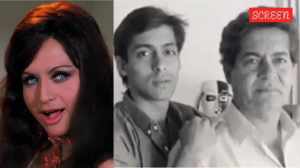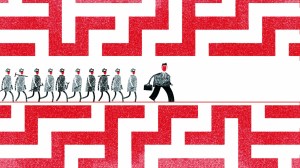Stay updated with the latest - Click here to follow us on Instagram
When the Judge asked him to come home
Husain courted controversies and battled against intolerance.
On March 26,2010,the Supreme Court said it was too late to invite painter Maqbool Fida Husain home. Forced to live a self-imposed exile by the sheer number of court cases filed against him by patriotic nationals,Husain had only recently decided to accept Qatar nationality.
He has made his decision, a three-judge bench led by the then Chief Justice of India,K G Balakrishnan,remarked when asked to intervene with the Prime Minister to ensure that the artist gets a “dignified return” with no threats of criminal action against him.
The painter had told a Delhi court that by last count he had at least 900 court cases against him. The cases,all based on complaints by private persons from Haridwar to Indore,accused him of obscenity and insulting national honour through his canvases. Unable to keep pace with the sheer number of complaints,Husain had appealed the Delhi High Court to have them all clubbed and transferred to the National Capital.
But the Supreme Court on that day was non-committal. What can the Prime Minister do if a person decides to live in Doha (capital of Qatar)? They are international citizens,they can live anywhere in the world, the bench had said.
The failed petition,filed by advocate Bhim Singh,had said Husains impending change of nationality brings to a close one of the sorriest chapters in independent India’s secular history.
I talked to him before filing the petition. He asked me who would let him come to India anyway, Singh said today. He added that Husain died an Indian.
In stark contrast was the May 5,2008 decision of Delhi High Court judge,Justice Sanjay Kishan Kaul,who did not mince words against the puritanists. Husain had approached the court to quash summons orders from various courts regarding his painting a nude that depicted India as a distressed woman.
A painter at 90 deserves to be in his home painting his canvases, Justice Kaul had written. The judge described Husain as an artist who actually celebrates nudity and considers it as the purest form of expression.
Until then,no institution had stepped forward for Husain,notably the government of that time,which took a circumspect position of not taking a position, Husains lawyer Akhil Sibal said today. Sibal said that he had a chat with Husain after the judgment to explain the verdict. He told me that he felt vindicated by the courts sympathy towards his work, said the lawyer.
The judgment had found baseless criminal proceedings against the artist for allegedly hurting public sentiments by painting obscene pictures of Hindu goddesses. Indias new puritanism,practised by a largely ignorant crowd in the name of Indian spiritual purity,is threatening to throw the nation back into the pre-Renaissance era, Justice Kaul had observed.
In a stinging criticism,Justice Kaul referred Husain’s case as a typical example of an artist facing the ire of the types who would not go to art galleries or have interest in contemporary art because if they did,they would know that there are many artists who embrace nudity as part of contemporary art.







